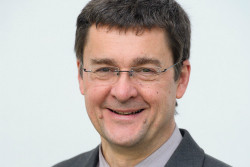Perfecting a Gaseous Air Sensor
Prof. Andreas Schütze of the Laboratory for Measurement Technology (LMT) at Saarland University (Germany) coordinates the EU-funded project SENSINDOOR (Nanotechnology based intelligent multi-SENsor System with selective pre-concentration for Indoor air quality control), which runs from January 2014 to December 2016. Its aim is to develop intelligent sensor systems based on nanotechnology to selectively monitor volatile organic compounds (VOCs) for demand-controlled ventilation in indoor environments. Here Prof. Schütze discusses the achievements and potential of the project to date. What is the potential impact of the sensor technology being developed in SENSINDOOR? The energy consumption for heating, ventilation and air conditioning (HVAC) of buildings is estimated to amount to almost 50 % of the overall primary energy consumption in industrialised countries. A large reduction of this energy consumption can be achieved by improved insulation and reduced air exchange. However, this will increase the concentration of the likes of formaldehyde, benzene and naphthalene in buildings, which are emitted by indoor sources (furniture, carpets, paint etc.). As we spend over 80 % of our time indoors this has a huge impact on our health, as it contributes to acute respiratory illnesses as well as increased cancer rates. With demand-controlled ventilation we can reduce the VOC concentration and thus ensure a healthier indoor environment. What have been the main achievements of SENSINDOOR so far? Achievements have been made on three levels in our project: at the technology level, we have developed Pulsed Laser Deposition (PLD) technologies for gas-sensitive layers to be integrated on various microsensor platforms as well as technologies for the deposition of Metal Organic Framework (MOF) layers on micro hotplates for pre-concentrators; at the sensor element level, novel metal oxide semiconductor (MOS) (gas sensor) and Silicon Carbide (based gas-sensitive) Field Effect Transistor (SiC-FET) sensor elements with high sensitivity for hazardous VOCs have been developed as well as an integrated microsystem combining sensor and pre-concentrator in a compact package; finally, at the systems level, we combined the sensor elements and pre-concentrator with dedicated electronics for dynamic operation and read-out with advanced data evaluation algorithms for very high sensitivity and selectivity. What for you is the most important result of the project so far? We have succeeded with the realisation of an integrated gas sensor microsystem that includes a micro-pre-concentrator to boost the sensitivity and selectivity of the VOC measurement system. This novel concept was conceived during the project preparation and both the modelling and first experimental tests have validated the basic idea. Most important for us is that this integrated microsystem can be realised at low cost and is thus also a commercially viable solution allowing the selective measurement of target VOCs at ppb level even against a much higher background of interfering gases. What are the main tasks/goals set for the remainder of the project? We are currently in the process of integrating all the different technological aspects into a single demonstrator system that will be thoroughly tested under controlled lab conditions. Then, we are planning to perform field tests in at least two different application environments, one in schools or kindergartens, one in private homes. What are the main challenges encountered in the project? From a technological point of view, the main challenge is bringing all the different technologies and components together in a single system at low cost and ensuring a stable operation under real-life conditions – it works in the lab, but real environments are much more complex and diverse. This is especially challenging for the calibration that will probably need to be performed onsite – at least in part – to take the local background into account. The other major challenge is to convey the meaning behind the measurement values: most people cannot relate to ‘x ppb of this and y ppb of that’. While numerical measurement values are fine for controlling the ventilation, we also need a simple and intuitive user interface to provide information to the people. This, however, is a huge task which will require a dedicated effort – in a further project.
Countries
Germany



